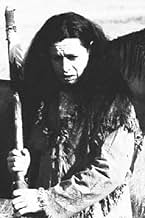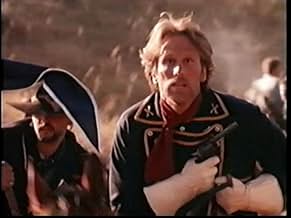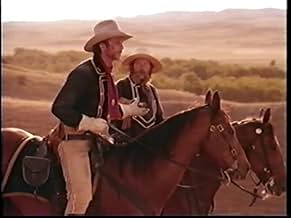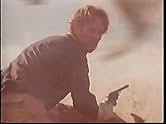अपनी भाषा में प्लॉट जोड़ेंThe legendary Native American chieftain refuses to go with his people peacefully to the reservation and starts a rebellion.The legendary Native American chieftain refuses to go with his people peacefully to the reservation and starts a rebellion.The legendary Native American chieftain refuses to go with his people peacefully to the reservation and starts a rebellion.
- 2 प्राइमटाइम एमी के लिए नामांकित
- 3 कुल नामांकन
- Young Curly
- (as Terry Bigcharles)
- High Hump
- (as Buffalo Child C. Koopepequanicit)
- Wahokiza Luta
- (as William Birdshead)
फ़ीचर्ड समीक्षाएं
Rather than being unique in this I imagine, he showed up at a time when the West was interested in Native people much like they are interested in Middle Eastern peoples today. War seems to create a sensationalist fascination with the other and so some attention was given his life in the popular media. Many of the biographies seem to contain details that conflict strongly with Sandoz, but no other researcher seems to have spent the same amount of time both in archives and in the communities. She has a pointed, detailed yet equivocal touch and so I trust her account better than any I have seen. This book (as is common) puts the film to shame.
But........ anyways...... I cannot recall how Crazy Horse died in the film since its been a while when I last saw it. In real life, he was only 35 when he was murdered by 3 white policemen who came to arrest him for no known reason. Apparently he was bayoneted in the back by one of these policemen while the other 2 held him so he couldn't free himself. It was truly a sad day in Lakota history when he died. It was also the way he died too that makes this situation even more sad.
Well..... however..... this is why I gave this film a 7 out of 10.
While this movie may deviate from the finest research points of one author, Sandoz, it plays well, overall, to the spirit of Native American experience, as well as to the nature of Crazy Horse. Keep in mind it is not listed as a docudrama. I grew up all my life on the Rez, my family is Native American and our minds and hearts were moved by this film. Although we are Nez Perce, all tribes unite in their admiration of Crazy Horse and the ability he had to be 'invisible' in the face of an army when necessary. So, when I use the euphemism "the devil's in the details" my message is "don't let the devil distract you from something great by tying you up with trivia." It is great to see a movie that is true to form in showing the nature of war. I grew up believing Indians were bad. My twin sisters came home crying one day from first grade because one of their friends told them that they were Indians. To my sisters, that meant they had to ride horses to white peoples' houses and scalp them. That's what they had learned from TV shows. Our mother had some reassuring to do and 'Coyote' tales to tell, like how humans came to be - http://www.ilhawaii.net/~stony/lore59.html
If you love Westerns, history, and have a heart for all peoples, you will love this film!
Furthermore it's doubtful that any indian tribe ever discussed matters military in terms of front lines and troops or whatever.
It's not even good as a old fashioned shoot-'em up adventure movie - it's too dull for that. If you want to see anything serious on the subject, watch "Dances With Wolves" or "Son of the Morning Star" instead.
क्या आपको पता है
- ट्रिवियाAugust Schellenberg previously played Sitting Bull in Witness to Yesterday (1973) and would later do so again in बरी माई हार्ट ऑन घायल घुटना (2007).
- गूफ़Major Reno is shown using a Henry Repeating Rifle, which later switches to a Winchester 1866. No Officers were using lever action rifles at the Little Bighorn. They mostly carried Sporting versions of the standard issue rifle, which was the Springfield Model 1873 "Trapdoor" Rifle. George Armstrong Custer carried a Remington Rolling Block Rifle in .50/70 caliber.
- भाव
Reporter: What about the Indians, General? And aren't the Black Hills officially Sioux land from the treaty of 1868?
General George Armstrong Custer: Whatever the right or wrong isn't the question. The Indians must be dispossessed. The practical question is how the inevitable can be accomplished with the least inhumanity to the Indians.
Reporter: Didn't General Polk say that?
General George Armstrong Custer: I believe in destiny, you see. For individuals as well as nations. Nothing can stop the movement of history.
टॉप पसंद
विवरण
इस पेज में योगदान दें































